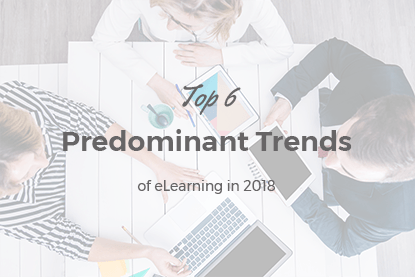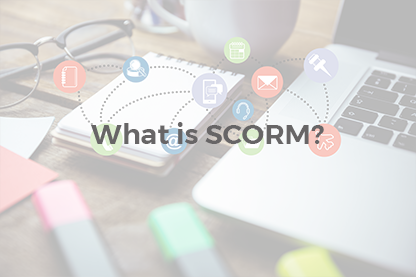You might be familiar with an HBO TV series “Silicon Valley”. Aside from being a hilarious show, it is also a remarkable satire. One of its’ signature gags is a montage of tech startup founders that promise “to make the world a better place”. However, it is a no-brainer that E-learning is the industry that is able to ease up the life of disabled students and make their personal world a more comfortable environment”. Online learning platforms and other information and communication technologies (ICT) allow disabled students get the same education they would’ve received in conventional institutions.
Returning to “Silicon Valley” and its showrunner Mike Judge: “It’s capitalism shrouded in the fake hippie rhetoric of ‘We’re making the world a better place,’ because it’s uncool to just say ‘Hey, we’re crushing it and making money.’ In reality, E-Learning for disabled people is business after all. It is also an opportunity to help those people to get a quality education.
In this article, we will speculate on the difficult approaches to different types of disabilities, barriers that can be overcome by E-Learning, technologies available for special students.
We will also speak of what approaches should E-Learning creators keep in mind while creating the accessible e-learning content.
Education and Learning Disabilities
UN convention guarantees the people with disabilities active participation in social life and basic human rights. These human rights include the rights to receive education and training.
In fact, this is one of the priorities at European strategy for persons with disabilities 2010-2020. The strategy includes the following: “ Equal access to quality education and lifelong learning enable disabled people to participate fully in society and improve their quality of life.” European Agency for Special Needs and Inclusive Education is one of the initiatives started by the European Commission.
The general term for specific learning problems, the World Health Organisation is Learning Disability (LD). The most often-affected skills are: reading, writing, listening, reasoning and calculating. Despite being challenged in one of several aspects, students are able to show remarkable results in their education.
E-Learning technologies and educational applications include the following:
All these pieces of technology have to be accessible for the disabled people to receive the proper education.
Various sources distinguish 7 to 8 categories of students according to the disabilities.
Among them are those suffering from:
and (other classification):
In the next chapter we’ll discuss the barriers that can be overcome according to Rolf Schulmeister.
Four Barriers That Can Be Overcome With E-Learning
People with disabilities experience the reduced access to information technology. Those people with access to technology then encounter a number of problems that have been documented by Fichten et al (2009).
Schulmeister is arguably the best surname a professor of education could possibly have (it literally translates like ‘school master’). He is working in education and E-Learning fields for quite some time. He is the founder of Institute of Sign Language and Communication for Deaf people in the linguistics field (1987). Schulmeister edited and issued E-Learning newspapers and research papers.
He claims E-Learning can be used to overcome the following existing real barriers:
Time. E-Learning saves tons of time, enables traveling back and forth along the course and examining files in fast/slow motion depending on what you might need.
Space. Learning objects are spacy - think of all the books, labs, media rooms in the facilities. Virtual learning objects turn to be very handy in replacing real ones. Virtual field trips to otherwise inaccessible locations are always helpful in educations.
Analog-digital. Computers are used to make media more accessible for people with certain disabilities. Digital content allows combining different types of media (video, audio, images, and text) and presenting it in the comfortable format.
Norm. E-Learning expands the range of learning opportunities for people with disabilities. Accessible communication between learning and better-structured content certainly help with overcoming of norm barrier.
These obstacles can be eradicated with the help of E-Learning and are of the great help to disabled people.
Assistive Technology Available For People With Disabilities
The term assistive technology in education includes various equipment, devices, tools and systems that help students with compensation, bypassing deficits and capabilities they might face due to their disabilities.
Leaving aside simpler and more traditional screen readers, wheelchairs and voice recorders, we should mention the following innovative technologies in E-Learning: text-to-voice devices, alternative keyboards, outlining software. Let’s give you some examples of software and devices that ease up the learning process for disabled people. There is no particular order.
Alternative keyboards. The Little Fingers keyboard, Braille keyboard, keyboards with the larger images of keys, and special functions in keyboards that are programmed via software. All these input devices offer students with disabilities an opportunity for better control during the educational process on the Internet.
Mouse alternatives. The less restrictive environment for students is also created with the help of mouse alternatives. There are trackballs, scroll wheels and other helpful features that help those who have difficulties with motor control.
HeadMouse is one of those devices that hasn’t been mentioned yet. It tracks the head movement and that way affects the control app software.
Touch screens sometimes could be useful as well as hands-free touchpads to control the mouse controls.
Also, in the case when the disabled person has severe motor malfunctioning, the computer may be operated with a Switch in conjunction with scanning software. There are different models of Switches that have multiple access points on the body (hands, feet, head, mouth).
As for software, Word Prediction Software helps to reduce the number of words that have to be typed.
There are also various types of text-t-speech software that read printed text aloud for those with sight handicap. Among the most popular are Intel Reader (in a bundle with Intel Portable Capture Station that captures text fragment from the articles and books immediately) and Kurzweil 3000.
Dyslexic students (those with literal difficulties) will benefit massively from it.
Creating Accessible E-Learning Content
Web-based pieces of training and other materials for learners are easily distributed online using LMS that are compatible with modern standards, and otherwise. it is way easier for students to communicate with each other and the tutors online.
The “accessible technology” means making three components of E-Learning scenario easy-to-reach.
These components are:
Content includes different types of material from text to all kinds of multimedia.
Communication includes forums, chat, face-to-face one-on-one or many-to-many discussion synchronized and realized on practice.
By construction we mean students work with various materials, taking notes, making presentations and creating more complex projects.
In regard to students with disabilities, E-Learning content should be designed with the help of the principles that make it:
Perceivable. Depending on the disability, people might need text alternatives, as well as its other forms like large print, Braille, symbols replacements, simplified language text passages and more.
Synchronized alternatives for multimedia are also required. The content should also have the form that allows it to be presented in different manners as well - such as spoken aloud, or in a simpler manner, etc.
Operable. All the functionality should be available from a keyboard. The content also should be presented with no time limit so every student with disabilities to have enough time to get acquainted with it.
Beware of creating content that is disturbing or might cause seizures. On the opposite side, there should be ways to help people with disabilities with navigation within the content.
Understandable. Text should be readable along the whole web pages of the content. The web pages should appear and operate in the user-friendly and predictable way.
Robust. By it, we mean full compatibility with future user agents. In most cases, the content is delivered via LMS. However, this is not always true as you might recall plenty of software from the previous article section.
Conclusions
The help of digital information through computers have made the present world access to all communities irrespective of their abilities and disabilities. E-Learning is the industry that is able to help with receiving education with the help of technologies, specially designed and delivered content and the wide range of devices that would be helpful.
Future technologies likely will be able to erase the gap entirely between students with disabilities and those who don’t have those disabilities. However, in the current state, steps that are taken in this respect say that we are moving in the direction “to make the world a better place” after all.








